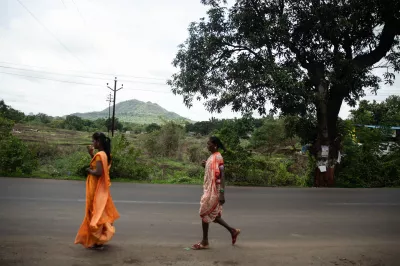Adapting the Graduation Approach for People with Disabilities
Many of the world’s poorest people have disabilities, and large numbers of people with disabilities (or people with disabilities in the household) are extremely poor. Self-employment is often the only realistic option for them, as many employers continue to discriminate against people with disabilities. Economic inclusion is important for many reasons. It can boost incomes, but it can also do so much more in terms of fostering social inclusion and self-confidence.
As implementations of the graduation approach have spread rapidly across different regions, donors have started to explore how the model might be adapted to meet the needs of particular groups of vulnerable people. They are tweaking livelihoods and social protection programs to target vulnerable and poor households in urban settings, refugees and internally displaced people, and people with disabilities. The focus on these groups is a departure from the early BRAC and CGAP-Ford pilots, which targeted the ultra-poor with an emphasis on households with working capacity — often excluding people with disabilities.

On May 4, CGAP, Fonkoze, Trickle Up, and the Pakistan Poverty Alleviation Fund (PPAF) held a webinar to discuss adaptations of the graduation approach in programs for people with disabilities. One insight to come out of the event was that there are no fundamental differences between programs designed for people with and without disabilities. In Haiti, for example, Fonkoze implemented its Chemin Lavi Miyo program for people with disabilities without making any major changes to the program. PPAF and Trickle Up shared similar experiences. However, this does not mean there are no differences. Below are some lessons that should be taken into account when adapting the graduation approach for people with disabilities:
- Be realistic about your program’s duration. Graduation programs for people with disabilities should generally be six months longer than programs for people without disabilities, but not always. People with disabilities are sometimes more motivated to move off handouts.
- Support caretakers. Programs should target not only people with disabilities, but members of households who support people with disabilities. For example, household members can be invited to participate in training sessions alongside people with disabilities.
- Rethink your collection methods. Savings are essential for people with disabilities, but collection methods need to be adapted for people with limited mobility. For instance, deposit collectors may be needed to reach physically disabled people who are unable to travel.
- Match asset transfers to disabilities. For instance, small livestock like chickens and guinea pigs are often manageable for people with disabilities in rural areas. In urban environments, tailoring and small grocery shops may be appropriate assets.
- Hire staff who care. It is imperative to hire empathetic staff who can provide strong social support.
- Make community sensitization a priority. Addressing the deeper social and physical barriers that people with disabilities face is important. In some communities, people with disabilities may be stigmatized and may live in isolation. In Haiti, for instance, a lack of ramps makes it difficult for people in wheelchairs to access stores and public offices, restricting their ability to participate in society. Providing psychosocial counselling can help bridge these divides and reinforce social cohesion.
- Build effective government partnerships. Do a solid scan of potential government partnerships, making sure these programs can be linked to appropriate health care and disability support programs. In Haiti, the Office of the Secretary of State for the Integration of Persons with Disabilities is the most directly relevant agency. It supports Fonkoze’s work in several ways, such as by facilitating relationships with community organizations and providing access to adaptive materials.
- Bring training and coaching to the household. Since some people with disabilities cannot go to group meetings due to mobility issues, household-level coaching should be fostered.
- Consider that disabilities affect people differently. Better segmentation can help to unpack often heterogeneous groups, such as people with physical, mental, and psychosocial disabilities.
Further research is needed to better understand the impact and cost-effectiveness of the graduation approach for people with disabilities. As organizations explore new applications of the graduation approach with other groups, additional research will be needed on the approach’s impact and adaptability. Based on the early experiences of Fonkoze, Trickle Up, and PPAF, however, the approach appears to have a lot of potential to improve lives within hard-to-reach groups.




Comments
Tailor your monitoring
Tailor your monitoring framework - additional expertise and additional indicators will be required for persons with disabilities as beneficiaries of a graduation program.
I want to help them
I want to help them
Add new comment